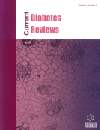
Full text loading...
We use cookies to track usage and preferences.I Understand
The link between Type 2 Diabetes (T2DM) and Parkinson's Disease (PD) dates back to the early 1960s, and ongoing research is exploring this association. PD is linked to dysregulation of dopaminergic pathways, neuroinflammation, decreased PPAR-γ coactivator 1-α, increased phosphoprotein enriched in diabetes, and accelerated α-Syn amyloid fibril production caused by T2DM. This study aims to comprehensively evaluate the T2DM-PD association and risk factors for PD in T2DM individuals. The study reviews existing literature using reputable sources like Scopus, ScienceDirect, and PubMed, revealing a significant association between T2DM and worsened PD symptoms. Genetic profiles of T2DM-PD individuals show similarities, and potential risk factors include insulin-resistance and dysbiosis of the gut-brain microbiome. Anti-diabetic drugs exhibit neuroprotective effects in PD, and nanoscale delivery systems like exosomes, micelles, and liposomes show promise in enhancing drug efficacy by crossing the Blood-Brain Barrier (BBB). Brain targeting for PD uses exosomes, micelles, liposomes, dendrimers, solid lipid nanoparticles, nano-sized polymers, and niosomes to improve medication and gene therapy efficacy. Surface modification of nanocarriers with bioactive compounds (such as angiopep, lactoferrin, and OX26) enhances α-Syn conjugation and BBB permeability. Natural exosomes, though limited, hold potential for investigating DM-PD pathways in clinical research. The study delves into the underlying mechanisms of T2DM and PD and explores current therapeutic approaches in the field of nano-based targeted drug delivery. Emphasis is placed on resolved and ongoing issues in understanding and managing both conditions.

Article metrics loading...

Full text loading...
References


Data & Media loading...

